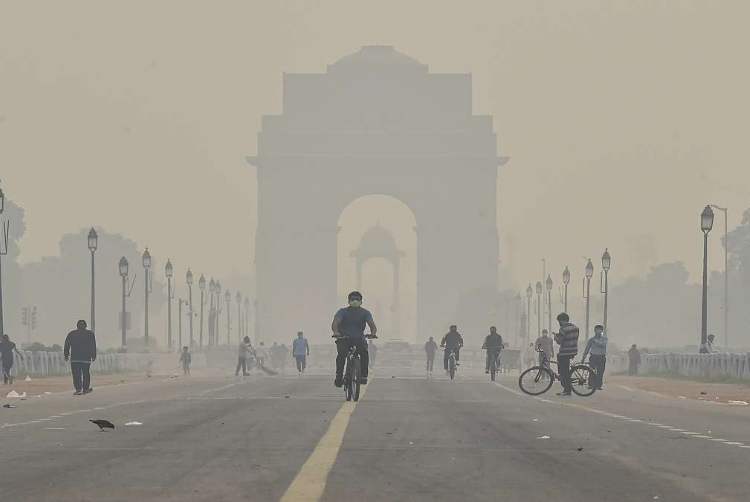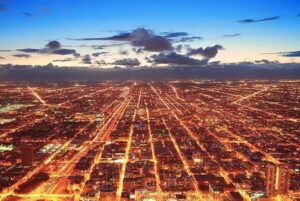
In the escalating search for culprits behind the rising tide of paediatric thyroid cancer, the world must now reckon with an uncomfortable truth: the air our children breathe and the light that illuminates their nights may be playing a silent yet potent role in the onset of disease. In a study published in Environmental Health Perspectives, researchers from Yale and other leading institutions have found statistically significant associations between early life exposure to PM2.5 and outdoor artificial light at night, and the risk of papillary thyroid cancer among children and adolescents.
One cannot afford to dismiss this as yet another academic exercise in environmental epidemiology. The evidence is both compelling and disturbing. It should jolt policy makers into action and force urban planners, health officials, and environmental regulators to reimagine what it means to design a city—or indeed, a childhood—free from carcinogenic risk.
READ I India’s pharma industry faces heat from Trump’s reshoring drive
PM2.5 pollution and paediatric thyroid cancer
The study conducted in California examined 736 cases of paediatric papillary thyroid cancer, diagnosed between birth and 19 years of age, and matched them with over 36,000 controls. The analysis revealed that for every 10 micrograms per cubic metre (μg/m³) increase in perinatal PM2.5 exposure, the odds of developing papillary thyroid cancer rose by 7% overall—and by 13% among Hispanic children.
Let us pause to digest that figure. This is not a trivial increase. For children living near congested highways, industrial corridors, or under the haze of frequent agricultural burning, a 10 μg/m³ bump in PM2.5 is not hypothetical—it is daily reality. The US Environmental Protection Agency’s annual PM2.5 limit is 12 μg/m³, a threshold routinely exceeded in many urban neighbourhoods.
Exposure during the perinatal period—the three months surrounding birth—is particularly alarming. This is a time when hormonal signalling and cellular differentiation are at their most delicate. PM2.5, composed of microscopic particles, is a known endocrine disruptor. It penetrates deep into the lungs, enters the bloodstream, and interferes with the thyroid’s regulatory functions. Studies have shown that prenatal exposure to PM2.5 can alter thyroid hormone levels in newborns and activate inflammatory pathways that may predispose cells to malignant transformation.
Light at night: The other carcinogen
If foul air during gestation is one villain, light pollution is the other. The same study found that children exposed to the highest levels of outdoor artificial light at night had a 25% higher chance of developing thyroid cancer compared to those in the lowest exposure group. Once again, the risk was pronounced in older children (15–19 years), the group in which hormonal fluxes and circadian rhythms are already volatile.

Artificial light at night suppresses melatonin production, a hormone with well-documented anti-carcinogenic properties. More critically, it disrupts the hypothalamic-pituitary-thyroid (HPT) axis, the master hormonal conduit that regulates thyroid function. When light cues are desynchronised—say, by constant nighttime exposure to street lamps, LED billboards, or even floodlit sports arenas—the HPT axis falters, increasing susceptibility to tumour formation.
This is not speculative theory. Epidemiological studies have linked O-ALAN with a range of cancers, including breast and prostate. What’s novel—and troubling—about this new study is the focus on children, a population whose vulnerability is often underestimated simply because they are rarely screened.
Hidden cost of urban living
One might argue that these findings are a reflection of broader urbanisation. That’s partially true. Both PM2.5 and O-ALAN are hallmarks of modern cities—products of dense traffic, industrial sprawl, and the insatiable desire to conquer the night. But this study went further. It adjusted for maternal education, birth weight, socioeconomic variables, and even caesarean birth history. The associations held.
More than a scientific revelation, this is a socioeconomic warning. Hispanic children, who often reside in areas of higher pollution due to systemic inequalities and zoning policies, face greater exposure and therefore higher risk. Light pollution, too, is disproportionately concentrated in poorer urban areas, where affordable housing is more likely to be located near sources of nighttime brightness like commercial signage and transportation hubs.
We know enough to act
Critics will call for more research, more precision, more granularity. Certainly, better personal-level exposure tracking would sharpen our understanding. But must we wait for wearable exposure monitors or a decade-long longitudinal cohort to tell us what we already suspect? The International Agency for Research on Cancer classifies PM2.5 as a Group 1 carcinogen. And while light pollution is not yet similarly classified, the mounting biological and epidemiological evidence demands precautionary action.
This is not merely an environmental issue. It is a public health emergency and a matter of intergenerational justice. If a child’s risk of cancer is determined in utero, by the quality of the air her mother breathes and the brightness of her bedroom window at night, then policy failure becomes culpability.
What needs to be done
First, the EPA and corresponding global agencies must revise PM2.5 limits in line with newer WHO guidelines. Governments must implement clean air zones not only around schools but also around maternity hospitals and housing for young families.
Second, urban lighting policies need urgent reform. Technologies exist—full cutoff lighting, shielded LEDs, and adaptive dimming—to reduce unnecessary nighttime brightness without compromising safety. These should be mandated in zoning codes.
Third, paediatricians must be trained to ask environmental questions during prenatal and postnatal visits. A child’s ZIP code should be as critical a data point as her birth weight or vaccination history.
Finally, the conversation must include environmental justice. Communities of colour, already burdened with healthcare disparities, cannot be left to fight this battle alone. Their children’s higher exposure to PM2.5 and O-ALAN is a legacy of discriminatory housing and industrial policies. Redressing this inequity is not charity; it is duty.
The findings of this study are relevant for India, where urban environments often combine dangerously high levels of PM2.5 with unchecked artificial lighting. Cities like Delhi, Kanpur, and Varanasi frequently record air quality indices in the “hazardous” category, with PM2.5 levels regularly exceeding 100 μg/m³—ten times the WHO guideline.
Meanwhile, outdoor artificial lighting continues to expand unabated, from residential colonies to commercial billboards, contributing not just to energy waste but to physiological disruption in vulnerable populations. With India already witnessing a rise in childhood thyroid disorders and cancers, this research should serve as a call to action for health authorities, urban planners, and environmental regulators.
The young deserve more than just affection and opportunity. They deserve safe wombs, clean air, and dark nights. The evidence linking environmental exposures like PM2.5 and artificial light at night to paediatric thyroid cancer may be new—but the mandate it delivers is clear and old as time: protect the innocent.
